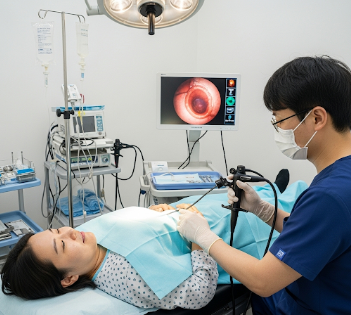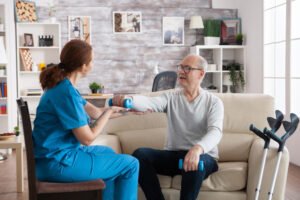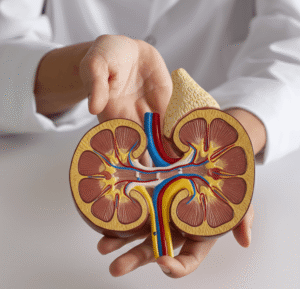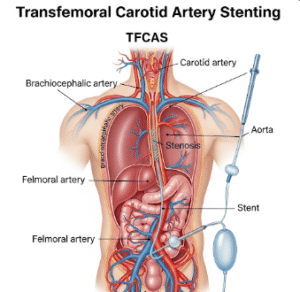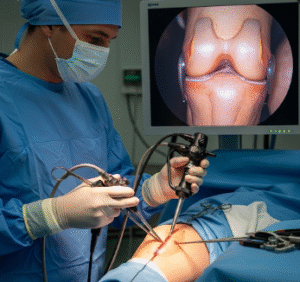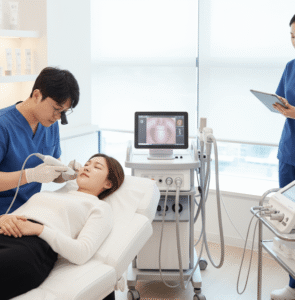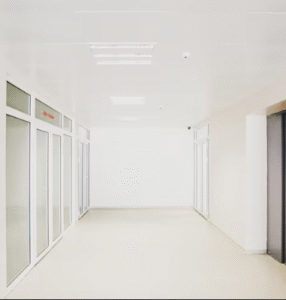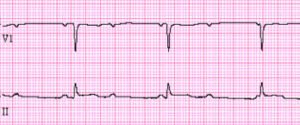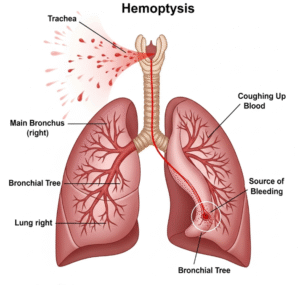Overview
Flexible sigmoidoscopy is a minimally invasive diagnostic procedure used to examine the rectum and lower part of the colon (sigmoid colon). Using a thin, flexible tube equipped with a light and camera (sigmoidoscope), physicians can detect polyps, inflammation, tumors, bleeding, or other abnormalities.
In South Korea, flexible sigmoidoscopy is performed in advanced gastroenterology centers, combining high-definition imaging, sterile techniques, and patient-focused care. Korean hospitals emphasize minimal discomfort, accurate diagnosis, and rapid procedure times, making it a widely recommended procedure for colorectal health.
What is Flexible Sigmoidoscopy?
Flexible sigmoidoscopy involves inserting a flexible sigmoidoscope through the rectum to examine the lower colon. The procedure allows the doctor to:
- Visualize the rectum and sigmoid colon lining
- Identify polyps, tumors, ulcers, or inflammation
- Take biopsies or tissue samples for analysis
- Investigate causes of rectal bleeding, chronic diarrhea, or unexplained abdominal pain
It is typically recommended for patients who:
- Experience persistent gastrointestinal symptoms → bleeding, pain, or changes in bowel habits
- Require colorectal cancer screening → particularly for patients over 50 or with family history
- Need evaluation for inflammatory bowel disease (IBD)
- Require follow-up after prior colorectal procedures
Flexible sigmoidoscopy is less invasive and more comfortable than full colonoscopy, while still providing essential diagnostic information.
What are the benefits?
Flexible sigmoidoscopy offers multiple advantages:
- Direct visualization of rectum and lower colon → allows early detection of abnormalities
- ➤ Minimally invasive and generally painless → flexible scope reduces discomfort
- ➤ Quick outpatient procedure → often completed in 15–30 minutes
- ➤ Biopsy capability → tissue samples can be collected for detailed analysis
- ➤ Early detection of colorectal cancer or polyps → enables timely treatment
- ➤ High precision in Korea → modern equipment and expert gastroenterologists ensure accurate results
Procedure Details
1) How should I prepare for Flexible Sigmoidoscopy?
Preparation ensures accurate examination and patient comfort:
- Medical evaluation → review gastrointestinal history, prior surgeries, and medications
- Dietary restrictions → clear liquids may be recommended 24 hours before the procedure
- Bowel preparation → enema or laxatives may be prescribed to clear the lower colon
- Medication adjustment → blood-thinning medications may need temporary discontinuation
- Consent and procedure discussion → explanation of procedure, risks, benefits, and aftercare
2) What happens during the procedure Flexible Sigmoidoscopy?
The procedure typically takes 15–30 minutes:
- Patient positioning → lying on the left side with knees bent
- Local anesthesia or lubrication → applied to reduce discomfort
- Insertion of flexible sigmoidoscope → gently advanced through the rectum into the sigmoid colon
- Examination → the colon is inspected while the scope may insufflate air to improve visibility
- Biopsy or polyp removal → performed if abnormal tissue is detected
- Completion and withdrawal → scope carefully removed, and patient comfort is assessed
In Korea, flexible sigmoidoscopy is performed using high-definition scopes and sterile techniques, ensuring accuracy, safety, and patient comfort.
3) What happens after Flexible Sigmoidoscopy?
- Immediate recovery → patients monitored briefly; most can go home the same day
- Mild discomfort → bloating, gas, or cramping may occur temporarily
- Dietary advice → resume normal diet unless otherwise instructed
- Follow-up → review biopsy results or schedule further procedures if necessary
- Return to normal activities → usually same day, avoiding strenuous activity for a few hours
Risks / Benefits
Potential Risks:
- Mild cramping, bloating, or minor rectal bleeding
- Risk of infection → rare
- Rare complications → perforation of the colon or adverse reaction to sedation (if used)
Key Benefits:
- Accurate visualization of rectum and lower colon
- ➤ Early detection of polyps, tumors, and inflammation
- ➤ Minimally invasive with rapid recovery
- ➤ Biopsy and polyp removal capability
- ➤ High-quality care in Korea with modern gastroenterology techniques
Recovery and Outlook
- Short-term recovery → mild bloating or cramping typically resolves within a few hours
- Functional improvement → early diagnosis enables timely treatment of colorectal issues
- Long-term outcome → detection and removal of polyps can prevent colorectal cancer
- In Korea, patients benefit from state-of-the-art equipment, skilled gastroenterologists, and patient-centered care, ensuring accurate, comfortable, and safe diagnostic procedures
When To Call the Doctor
Contact your gastroenterologist if you experience:
- Persistent or severe abdominal pain or bleeding after the procedure
- ➤ Fever or signs of infection
- ➤ Difficulty passing stool or unusual gastrointestinal symptoms
- ➤ Complications following biopsy or polyp removal
Timely evaluation ensures safe recovery and effective follow-up care.
Best Korea Option / Process
South Korea provides top-tier flexible sigmoidoscopy services:
- Expert gastroenterologists → skilled in minimally invasive colorectal procedures
- High-definition flexible scopes → clear visualization of rectum and sigmoid colon
- Comprehensive care packages → pre-procedure evaluation, procedure, biopsy, and follow-up
- Outpatient procedure → rapid recovery, minimal discomfort, and efficient results
- International patient support → multilingual staff, appointment scheduling, and personalized guidance
Patients choosing Korea for flexible sigmoidoscopy can expect accurate, safe, and minimally invasive colorectal evaluation, making it a preferred destination for gastrointestinal health in Asia.

